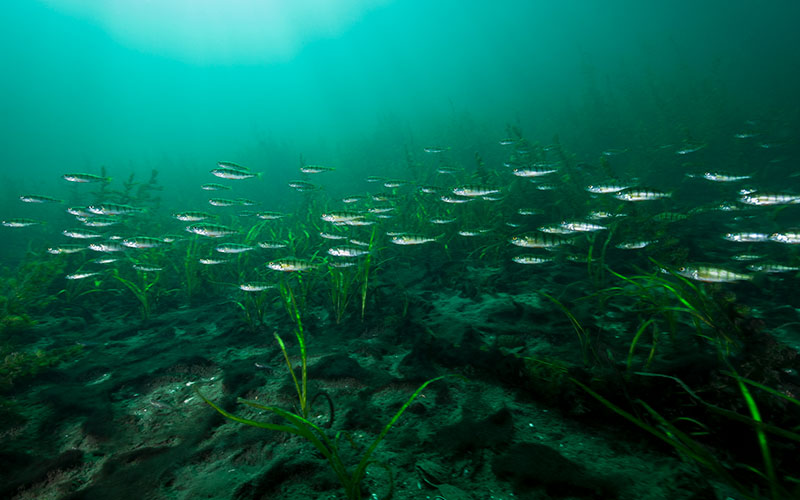Executive Summary
It’s time for action
Over the past six years of Fishery Audits, the federal government has made significant investments, developed new policies and updated laws to improve fisheries management. The true measure of success, however, is on the water: have these changes led to healthier fisheries?
According to the indicators in this latest Fishery Audit, the answer is no. Fewer than one-third of wild fish stocks are considered healthy, and the vast majority of critically depleted stocks lack rebuilding plans.
The new Fisheries Act rebuilding regulations introduced in April 2022 can — and must — mark a turning point. Fisheries and Oceans Canada (DFO) now has a legal requirement to rebuild Canada’s fish populations to support sustainable and prosperous fisheries, healthy coastal communities and a more resilient, bountiful ocean.
This is long overdue.
But to trigger the legal rebuilding requirements, stocks first need to be assigned a health status. And unfortunately, a large proportion of stocks — 37 per cent — continues to languish in DFO’s “uncertain” category.
That’s unnecessary. Enough data already exists to assign many of these stocks a provisional status to start managing them effectively. According to Oceana Canada’s recent analysis, nearly a quarter of these ‘uncertain’ stocks are likely critically depleted.
But as this year’s Fisheries Act highlights, that’s not the only issue the government needs to address.
Three years after the national Fishery Monitoring Policy was released, it has yet to be fully implemented in a single fishery. Meanwhile, the percentage of stocks with a recent stock assessment has declined.
DFO is also failing to take a growing body of climate research into account. Although many studies show how climate change is affecting fish, that science isn’t being reflected in assessments or management plans for fisheries. This is worrisome for species like shrimp and snow crab that are especially vulnerable to ocean acidification, extreme marine heat waves and other climate-related impacts.

Credit: iStock/LaSalle-Photo
Another concern is the state of forage fish: the species that feed whales, seabirds and many commercial fish. This year, DFO stopped commercial fishing on two critically depleted herring and mackerel stocks. However, other dangerously depleted forage stocks, like capelin, continued to be overfished. With the capelin quota set contrary to scientific advice and precautionary principles, the population is not being given any chance to recover.
The Canadian government has applied precautionary fisheries management inconsistently for too long — with disastrous consequences. Instead of focussing on short-term yields, it’s time to prioritize the long-term value of a resilient ocean.
There is broad consensus on the way forward: DFO must take an ecosystem-based approach that reflects the interrelationships between species and a changing environment. It must follow its own policies to make decisions informed by the best available science and not allow the absence of data to delay needed action. It must do more to mobilize Indigenous Knowledge Systems to advance reconciliation and leverage valuable expertise and lessons from Indigenous Peoples. The recommendations in this Audit propose practical steps to act on these priorities.
When we give oceans the chance, they have enormous potential to rebound, help sustain coastal communities and cultures, support a thriving seafood industry and feed people around the world.
There is no more time to lose. Canada has the laws and resources to restore abundance to our oceans. Now the government must act. The health of our oceans and all who rely on them depend on it.
THE 2022 SCORECARD
For six years, Oceana Canada has been evaluating the state of Canada’s fisheries and how well — or poorly — the government is using the best available science, monitoring and management capabilities to restore abundance to our oceans. In 2022, progress on many management indicators continued to stagnate, despite clear policy and work plan commitments from DFO. The result is depleted stocks, overfishing, a lack of robust data and insufficient efforts to recover depleted populations. This scorecard presents the top-line results for 2022, while a deeper dive into the findings begins on page 8.
Overall Stock Health Status
Nearly one in five stocks are still critically depleted
For more than half a decade, the indicators of good fisheries management have largely remained unchanged. This year — once again — less than a third of marine fish and invertebrate stocks can be confidently considered healthy, and nearly one in five stocks are still critically depleted. In fact, the number of healthy stocks has declined since 2017.
In the six years Oceana Canada has been producing these audits, the number of healthy fisheries has decreased and most of the management indicators haven’t budged.
DFO continues to classify more than a third of all stocks as “uncertain.” However, Oceana Canada’s analysis suggests that enough data exist to assign many of them a provisional health status.† And that’s a crucial first step toward effective and informed management.
Shifting stocks out of the uncertain category and assigning them to healthy, cautious and critical categories provides essential guidance for what management approaches to take. Under the new laws and regulations of the modernized Fisheries Act, all stocks in the critical zone require rebuilding plans. These plans must define objectives to rebuild the stock, including measurable targets and timelines. Meanwhile, stocks in the cautious zone are required to be managed at levels that support growth toward the healthy zone.
Over time, this will result in a greater number of healthy stocks and should prevent stocks in the cautious zone from slipping into critical territory. But none of this can happen until DFO does the basic research required to determine the health status of the 72 stocks in the uncertain category.
Key Terms
DFO has three categories of fish stock health. They are often defined relative to the stock biomass that would produce a maximum sustainable yield (BMSY). Maximum sustainable yield is the largest volume of fish that can theoretically be harvested without reducing the size of the population over the long term.ϐ
HEALTHY
A stock is considered healthy if its biomass is greater than 80 per cent of that which would support BMSY. When a stock is in this zone, fisheries management decisions are designed to keep it healthy.
CAUTIOUS
A stock falls in the cautious zone if its biomass is between 40 and 80 per cent of BMSY. If a stock falls into this zone, harvesting rates should be reduced to avoid seriously depleting it and to promote rebuilding to the healthy zone.
CRITICAL
A stock falls in the critical zone if its biomass is less than 40 per cent of BMSY. If a stock moves into the critical zone, serious harm is occurring, and conservation actions become crucial.
Rebuilding wild fish and ensuring healthy fisheries requires
Sound science
to understand the status of stocks, their biology and how fishing pressure and environmental factors will affect them in the future.
Effective monitoring
to determine how many fish are harvested and discarded from all sources of fishing activity.
Good management decisions
based on data that considers stocks in the context of a changing ecosystem and prioritizes long-term health, abundance and prosperity over short-term yields.
2022 Hits and Misses
This year, the federal government made several difficult but necessary decisions that prioritized rebuilding fish abundance. But in other cases, it failed to follow scientific advice and DFO’s guidance on the Precautionary Approach. This inconsistency highlights that more work needs to be done to improve fisheries management in Canada.
Following scientific advice
Reduced fishing pressure to support the population recovery of depleted stocks
Pacific herring
Atlantic spring and fall herring (4T)☼
Atlantic mackerel
Atlantic cod (3Pn4RS)
Failing to follow scientific advice
Maintained dangerously high fishing quotas on depleted stocks, risking their recovery
Capelin (2J3KL)
Northern cod (2J3KL)₸
Atlantic herring (4VWX)¤
The goal of ecosystem-based management is to maintain the health of the whole as well as the parts. It acknowledges the connections among things.
† For details, see Oceana Canada’s report, A Fuller Picture of the State of Canada’s Fisheries: Assessments for Data-Limited Stocks. Available at https://oceana.ca/en/reports/a-fuller-picture-of-the-state-of-canadas-fisheries-assessments-for-data-limited-stocks/
ϐ Maximum sustainable yield (MSY) is a globally accepted standard for fisheries management. The UN Food and Agriculture Organization’s Code of Conduct for Responsible Fisheries, to which Canada is a signatory, indicates governments or other agencies responsible for fisheries management need to adopt appropriate measures, based on the best scientific evidence available, that are designed to maintain or restore stocks at levels capable of producing MSY.
ϖ https://www.pewtrusts.org/-/media/assets/2003/06/02/poc_summary.pdf
☼ Refers to the Northwest Atlantic Fisheries Organization (NAFO) Convention area corresponding to the stock management area. See map for more: https://www.nafo.int/About-us/Maps
₸ There remains a moratorium in effect for the Northern cod commercial fishery, however, the Stewardship Fishery allowed a maximum authorized harvest level of 12,999 tonnes. This is a rollover from the 2021 amount, which does not follow scientific advice to keep fishing removals to the lowest possible level. There is also substantial, yet unaccounted for, fishing pressure from the ongoing recreational fishery.
¤ The Total Allowable Catch (TAC) was reduced by 33 per cent from the previous year. However, this decision was not in line with the Precautionary Approach Framework and went against the result of the government’s own management strategy evaluation which proposed a quota reduction of 63 per cent. Further, removals of bait are not accounted for and are largely uncertain. See link for more: https://oceana.ca/en/blog/forage-fish-are-essential-to-the-marine-ecosystem/
